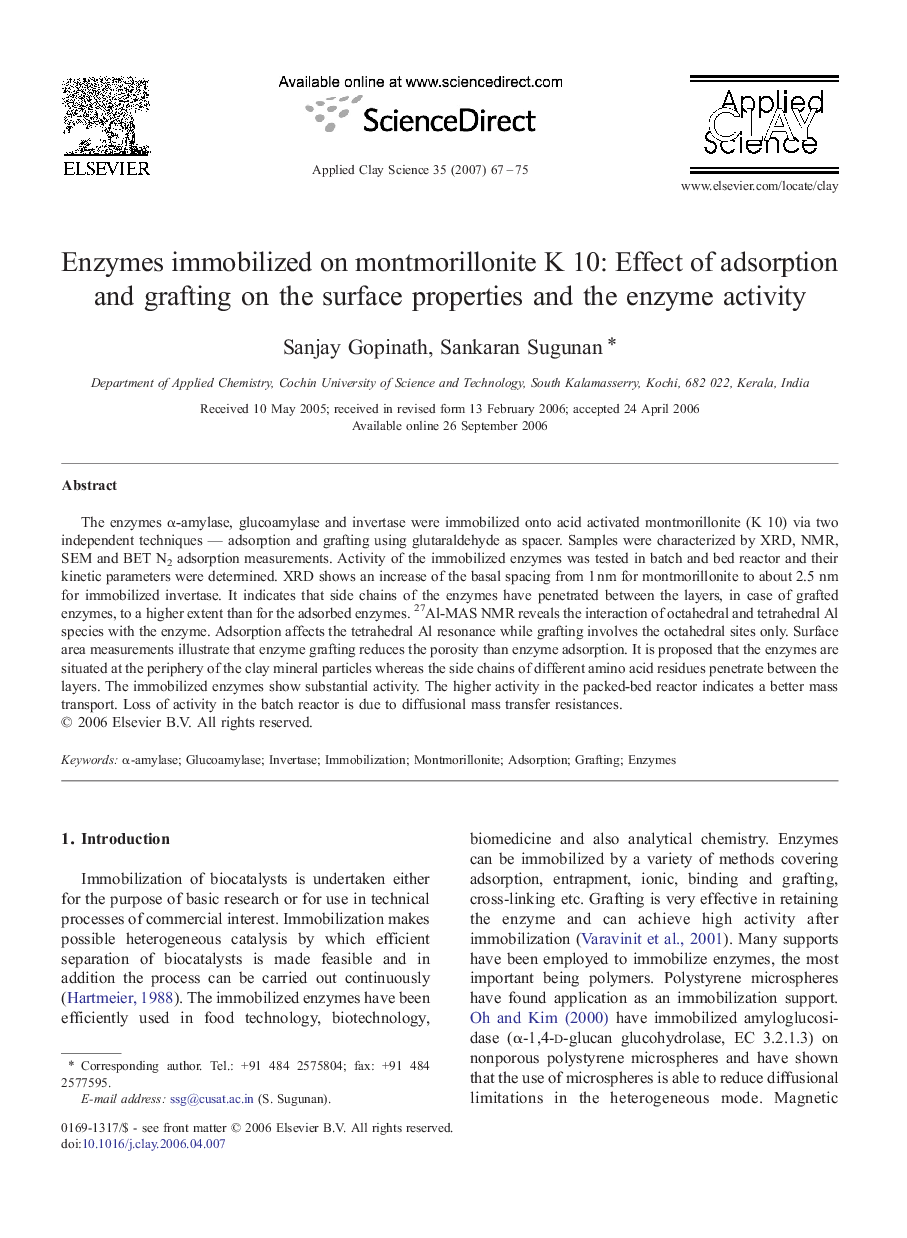| Article ID | Journal | Published Year | Pages | File Type |
|---|---|---|---|---|
| 1696670 | Applied Clay Science | 2007 | 9 Pages |
The enzymes α-amylase, glucoamylase and invertase were immobilized onto acid activated montmorillonite (K 10) via two independent techniques — adsorption and grafting using glutaraldehyde as spacer. Samples were characterized by XRD, NMR, SEM and BET N2 adsorption measurements. Activity of the immobilized enzymes was tested in batch and bed reactor and their kinetic parameters were determined. XRD shows an increase of the basal spacing from 1 nm for montmorillonite to about 2.5 nm for immobilized invertase. It indicates that side chains of the enzymes have penetrated between the layers, in case of grafted enzymes, to a higher extent than for the adsorbed enzymes. 27Al-MAS NMR reveals the interaction of octahedral and tetrahedral Al species with the enzyme. Adsorption affects the tetrahedral Al resonance while grafting involves the octahedral sites only. Surface area measurements illustrate that enzyme grafting reduces the porosity than enzyme adsorption. It is proposed that the enzymes are situated at the periphery of the clay mineral particles whereas the side chains of different amino acid residues penetrate between the layers. The immobilized enzymes show substantial activity. The higher activity in the packed-bed reactor indicates a better mass transport. Loss of activity in the batch reactor is due to diffusional mass transfer resistances.
